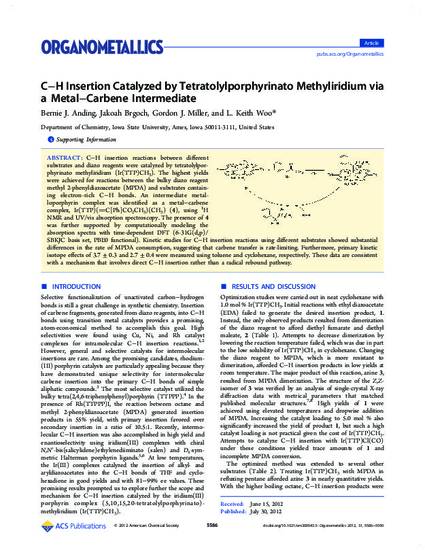
Fe(III), Cu(II), and Ag(II) porphyrin complexes are active catalysts for benzylic and ring C−H insertions by carbene fragments transferred from methyl diazomalonate, 2. Temperatures above 100 °C are required, and yields greater than 70% have been achieved. C−H insertions with cyclohexane and tetrahydrofuran are catalyzed at a lower temperature of 60 °C with 60% yields when para-substituted methyl 2-phenyldiazoacetates, 15a−d, are used as carbene sources. The rate for Fe(TPP)Cl-catalyzed insertion into the C−H bond of cyclohexane was found to be first-order in the concentration of methyl 2-(p-chlorophenyl)diazoacetate, p-Cl-MPDA, indicating that formation of a carbene complex is the rate-determining step. Competition reactions for cyclohexane insertion with para-substituted methyl 2-phenyldiazoacetates correlated linearly with σ+ Hammett parameters with a ρ value of –1.11 ± 0.05 when Fe(TPP)Cl was used as a catalyst, demonstrating that electron-donating para-substituents on the phenyl group of the methyl 2-aryldiazoacetates enhanced reactivity. These data are consistent with the involvement of an electrophilic iron−carbene complex in the catalytic cycle. A mechanistic model for the iron-mediated C−H insertion reactions is proposed.
Available at: http://works.bepress.com/l-woo/12/

Reprinted (adapted) with permission from Organometallics 27 (2008): 637, doi:10.1021/om7007502. Copyright 2008 American Chemical Society.